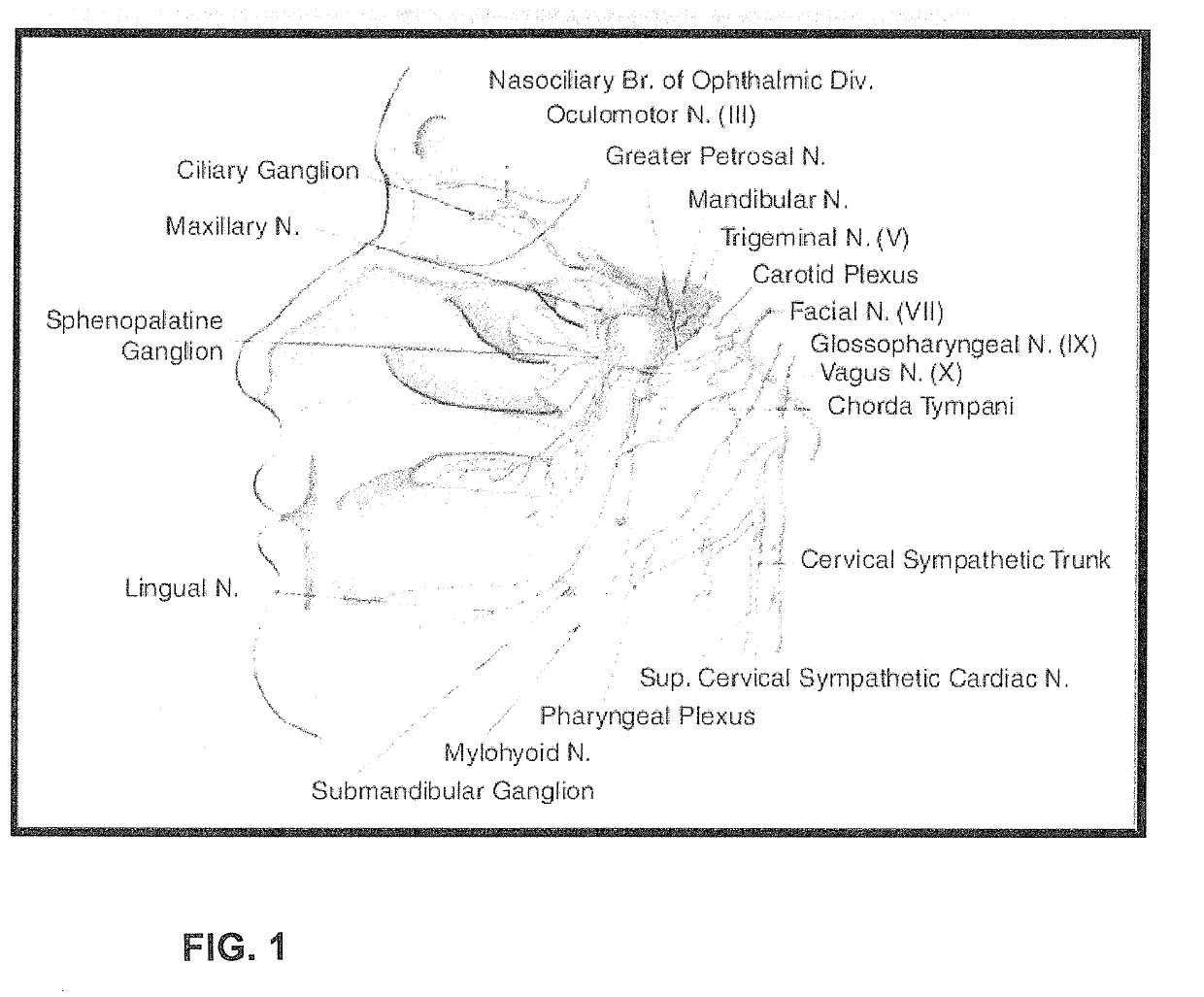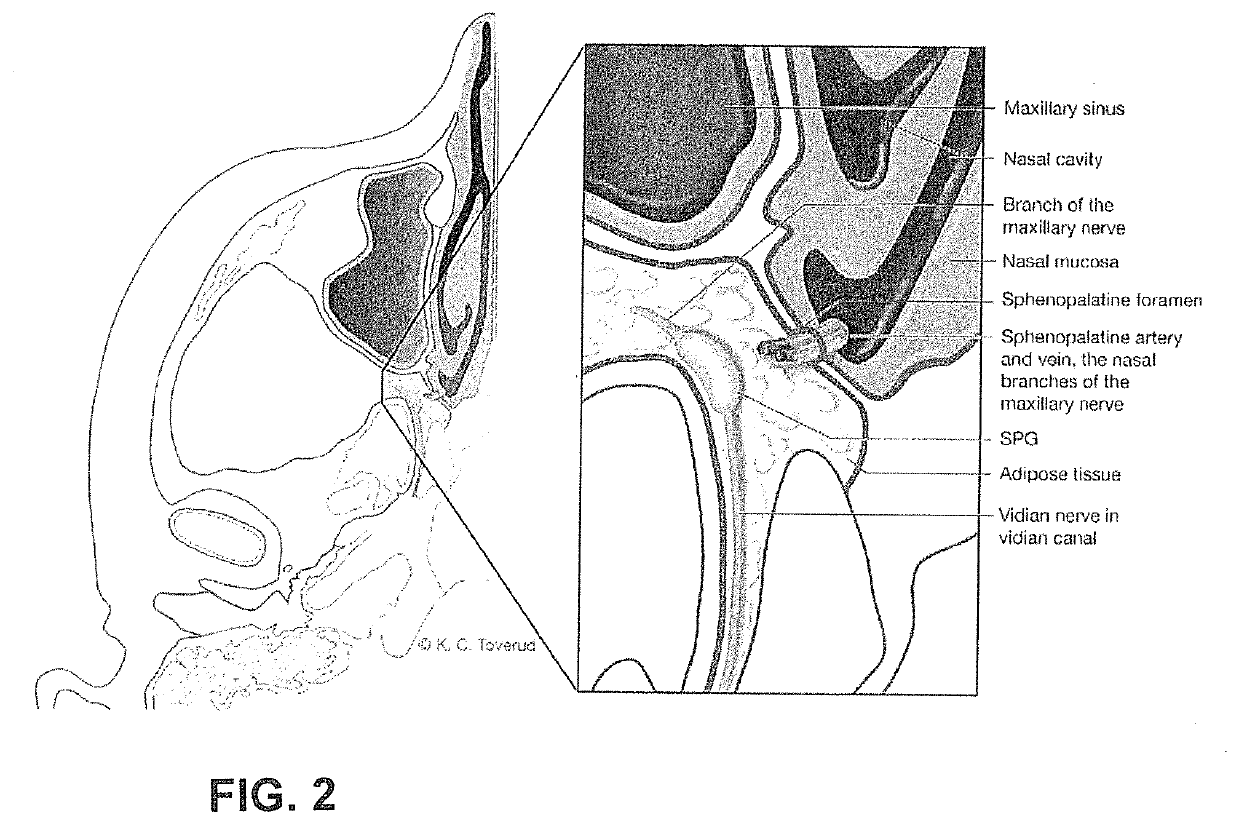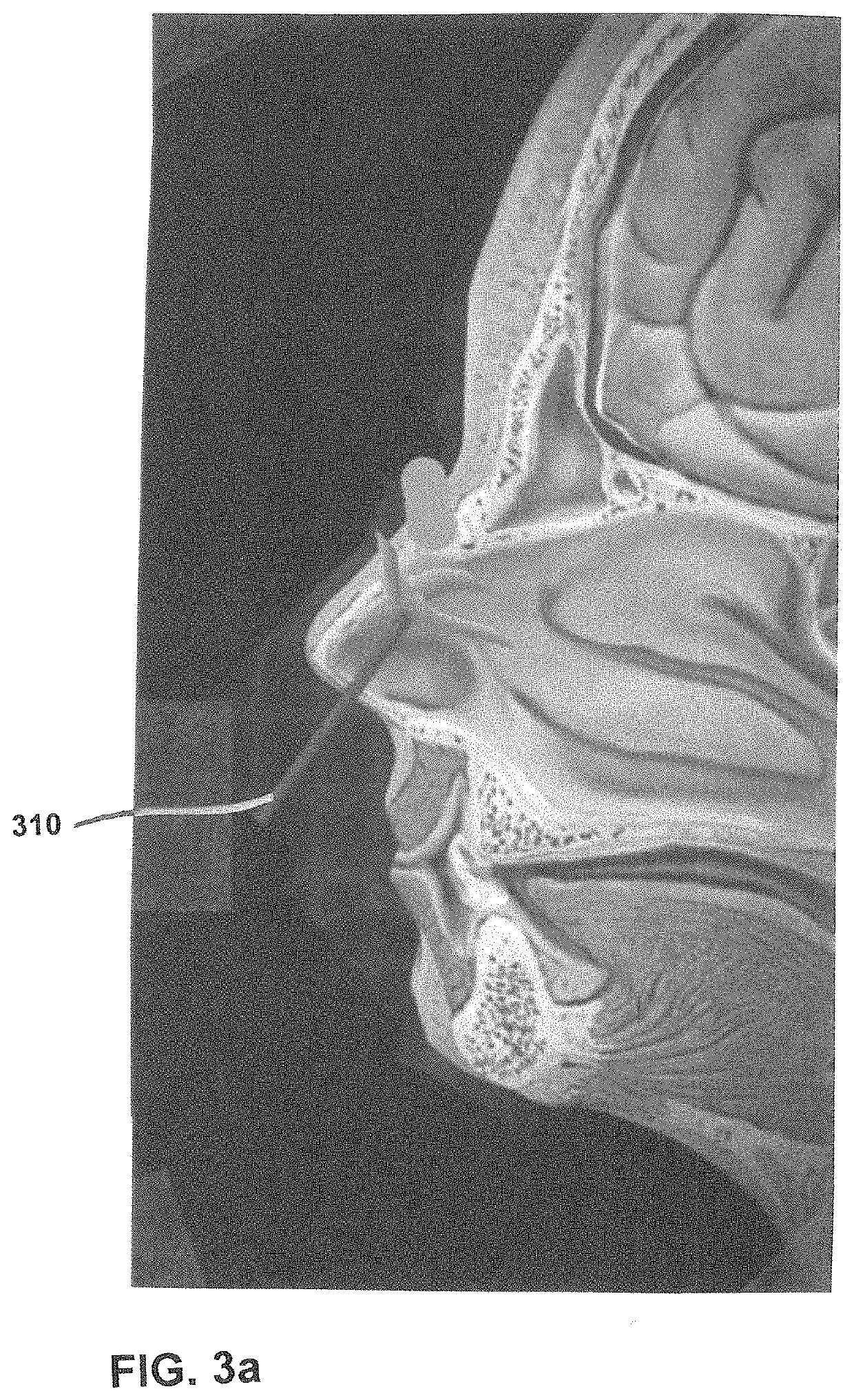Method for Treating Head or Cranium Pain Including Migraine and Cluster Headaches
a cluster headache technology, applied in the field of head or cranium pain treatment, can solve the problems of not allowing enough time for absorption/diffusion, and achieve the effects of increasing contact time, increasing contact time, and increasing diffusion and absorption
- Summary
- Abstract
- Description
- Claims
- Application Information
AI Technical Summary
Benefits of technology
Problems solved by technology
Method used
Image
Examples
Embodiment Construction
[0021]With reference to FIG. 1, the Sphenopalatine Ganglion (SPG) is a group of nerve cells that is linked to the trigeminal nerve, the main nerve involved in headaches. The SPG, located behind the nose, directly under the nasal mucosa, carries information about sensation, including pain, and also plays a role in autonomic functions, such as tearing and nasal congestion. In particular, the SPG is located in the sphenopalatine fossa, encapsulated in connective tissue, surrounded by fat tissue and separated from the nasal cavity by a bony wall. The sphenopalatine fossa communicates with the nasal cavity through the sphenopalatine foramen (SPF), which contains neurovascular structures packed with connective tissue and is covered by mucosa in the nasal cavity.
[0022]FIG. 2 is an Illustration of the relationship between a nasal cavity and the sphenopalatine fossa (axial plane). In order to reach the SPG, a drug (or medication) applied intranasally over the sphenopalatine foramen will have...
PUM
 Login to View More
Login to View More Abstract
Description
Claims
Application Information
 Login to View More
Login to View More - R&D
- Intellectual Property
- Life Sciences
- Materials
- Tech Scout
- Unparalleled Data Quality
- Higher Quality Content
- 60% Fewer Hallucinations
Browse by: Latest US Patents, China's latest patents, Technical Efficacy Thesaurus, Application Domain, Technology Topic, Popular Technical Reports.
© 2025 PatSnap. All rights reserved.Legal|Privacy policy|Modern Slavery Act Transparency Statement|Sitemap|About US| Contact US: help@patsnap.com



